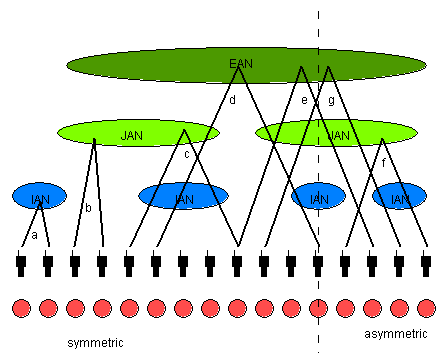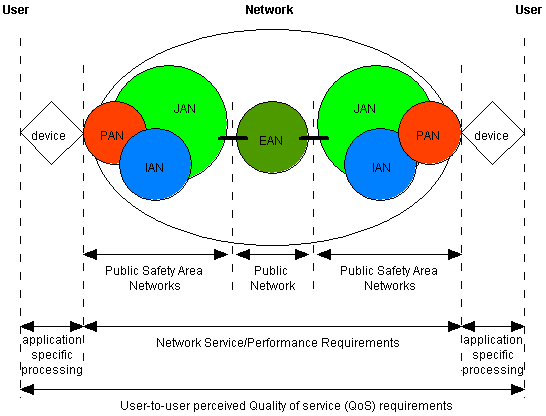Public Safety Network Requirements
PUBLIC SAFETY NETWORK REQUIREMENTS
Usage scenario
Emergency workers such as police, firefighters, and paramedics need excellent situational awareness in order to do their jobs effectively. In addition, certain emergency situations will require paramedics to maintain high bandwidth, real-time connectivity with hospitals and local command posts while traveling to and returning from the site of the emergency. This can be facilitated if the responders are able to make use of whatever access networks they pass through while in transit. In addition, in very serious emergency situations access points for a particular network type may become overloaded or they may be degraded or destroyed. Emergency response communications equipment must be capable of responding to these unanticipated outages by switching conductivity to other access network technologies without requiring intervention on the part of the user.
Network Performance Requirements
Understanding the constraints imposed by public safety applications and usage scenarios is key in building, deploying and operating public safety communication networks. There are at least two approaches that can be envisaged when choosing a communications network. The first is that one can design a network customized to the type or types of information to be distributed (i.e. based on application requirements). The second is that one can use an existing network design and examine how the requirements of a specific application can be accommodated. However, regardless of the approach pursued in designing a network, the end goal remains in determining how well a network distributes the information generated by a particular application, or in other words, how well does a network meet the application quality of service requirements?
Technical Approach
In order to provide an answer to this fundamental question, ANTD has developed a path-based reference network model as illustrated in Figure 1. Our two-step approach consisted of obtaining network performance results using the path-based reference model and then comparing these results with the application performance requirements as shown in Figure 2. This analysis was used as a basis to derive recommendations for the network performance quantitative requirements.


Deliverables
- Quantitative network performance in Public Safety Statement of Requirements (SOR) for Communications and Interoperability, which is part of The SAFECOM Program in the Department of Homeland Security.
- Software Tools
-
- Excel spread sheet for path based network performance calculation.
This work was supported by NIST/Office of Law Enforcement Standards (OLES).

